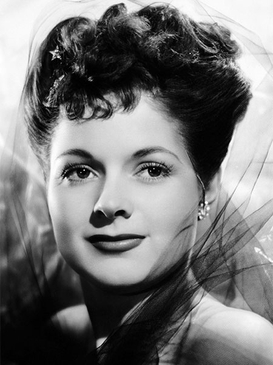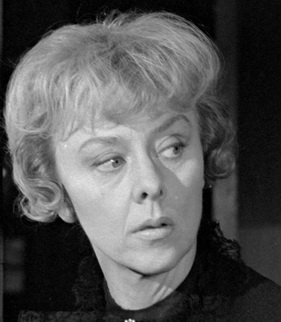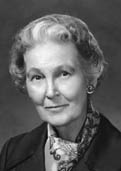
Estherville is a city in Emmet County, Iowa, United States. The population was 5,904 in the 2020 census, a decline from 6,656 at the 2000 census. It is the county seat of Emmet County.

Waxahachie is the county seat of Ellis County, Texas, United States. Its population was 41,140 in 2020.

Julius Dassin was an American film and theatre director, producer, writer and actor. A subject of the Hollywood blacklist, he subsequently moved to France, and later Greece, where he continued his career. He was a member of the Academy of Motion Picture Arts and Sciences and the Screen Directors' Guild.

Jo-Carroll Dennison was an American actress and model who was Miss America 1942.

Jacqueline Beer is a French actress and beauty pageant titleholder who was crowned Miss France 1954 and represented her country at Miss Universe 1954 where she placed Top 16. She is Chair of the Board of Directors of the Thor Heyerdahl Institute, located in Larvik, Norway. Her second husband was scientist Thor Heyerdahl. She was sometimes credited as Jacqueline Baer.

The 1916 Texas hurricane was an intense and quick-moving tropical cyclone that caused widespread damage in Jamaica and South Texas in August 1916. A Category 4 hurricane upon landfall in Texas, it was the strongest tropical cyclone to strike the United States in three decades. Throughout its eight-day trek across the Caribbean Sea and Gulf of Mexico, the hurricane caused 37 fatalities and inflicted $11.8 million in damage.

Navarro College is a public community college in Texas with its main campus in Corsicana and branches in Mexia, Midlothian, and Waxahachie. The college has an annual student enrollment of more than 9,000 students.

Three Came Home is a 1950 American World War II film directed by Jean Negulesco, based on the memoirs of the same name by writer Agnes Newton Keith. It depicts Keith's life in North Borneo in the period immediately before the Japanese invasion in 1942, and her subsequent internment and suffering, separated from her husband Harry, and with a young son to care for. Keith was initially interned at Berhala Island near Sandakan, North Borneo but spent most of her captivity at Batu Lintang camp at Kuching, Sarawak. The camp was liberated in September 1945.

Louise Latham was an American actress, perhaps best known for her portrayal of Bernice Edgar in Alfred Hitchcock's 1964 film Marnie.

Agnes Newton Keith was an American writer best known for her three autobiographical accounts of life in North Borneo before, during, and after World War II. The second of these, Three Came Home, tells of her time in Japanese prisoner-of-war camp and civilian internee camp in North Borneo and Sarawak, and was made into a film of the same name in 1950. She published seven books in all.
Ogden Newspapers Inc. is a Wheeling, West Virginia based publisher of daily and weekly newspapers, magazines, telephone directories, and shoppers guides.
Fort Defiance State Park is a state park in Emmet County, Iowa, United States. The park is 191 acres (77 ha) and sits at an elevation of 1,453 feet (443 m). The park, which was built by the Civilian Conservation Corps during the Great Depression, was opened to the public in 1930. Fort Defiance State Park is open for year-round recreation including picnicking, hiking, and camping.
The 1947 Wisconsin Badgers football team was an American football team that represented the University of Wisconsin in the 1947 Big Nine Conference football season. The team compiled a 5–3–1 record and finished in second place in the Big Nine Conference. Harry Stuhldreher was in his 12th year as Wisconsin's head coach. The team was ranked No. 9 in the AP Poll before losing to Michigan on November 15, 1947. The team averaged 280.1 yards per game of total offense, 205.9 yards per game by rushing, and 74.2 by passing.

May Owen was an American medical doctor from Texas who discovered that the talcum powder used on surgical gloves caused infection and scar tissue to form on the peritoneum. She was the first woman elected as president of the Texas Society of Pathologists (1945), of the Tarrant County Medical Society (1947), and of the Texas Medical Association (1960). She endowed the second chair of the Texas Tech University School of Medicine and received many awards during her career, including induction into the Texas Women's Hall of Fame, Recognition of Merit from the Texas Medical Association, and receipt of the George T. Caldwell Award from the Texas Society of Pathologists.
The 1902 TCU football team represented Texas Christian University (TCU) as an independent during the 1902 college football season. The school was renamed Texas Christian University in 1902 and was previously known as Add–Ran University. They played their home games in Waco, Texas.
The 1947 Iowa State Cyclones football team represented Iowa State College of Agricultural and Mechanic Arts in the Big Six Conference during the 1947 college football season. In their first year under head coach Abe Stuber, the Cyclones compiled a 3–6 record, finished in fifth place in the conference, and were outscored by opponents by a combined total of 141 to 111. They played their home games at Clyde Williams Field in Ames, Iowa.

William Logan was an American basketball player. He is best known for his college career at the University of Iowa.

Anita Gordon was an American singer who performed on radio and television and sang on films and records.

Shannon Willis Deniston was an American athlete and sports coach. A native of Long Beach, Deniston attended St. Mary's College of California for one year before starting a professional baseball career in 1939. He played for several minor league teams before serving in World War II at the San Diego Marine Corps Base. While there he also coached the baseball team at Pepperdine University, where he received a degree, and played professional football in the Pacific Coast Professional Football League (PCPFL) and on a military service team. After the war was over Deniston returned to professional baseball as a player-manager, spending 1947 to 1955 both playing for and managing several minor league teams while also serving as a college coach at Pepperdine and Drake University. Deniston retired from playing in 1956 and became a high school football coach, a position he would serve in until 1977, when he was named head coach at United States International University. He retired from coaching in 1987. Deniston became a centenarian in 2019 and died at the age of 101 in 2020.

Mary Lee Margaret Dearring was an American child actress who was active from 1947 until 1973. Starting as a child model, she performed in films, television, and the stage, including a six-month run on Broadway for Anniversary Waltz, and a regular starring role on a television series as a teenager.















